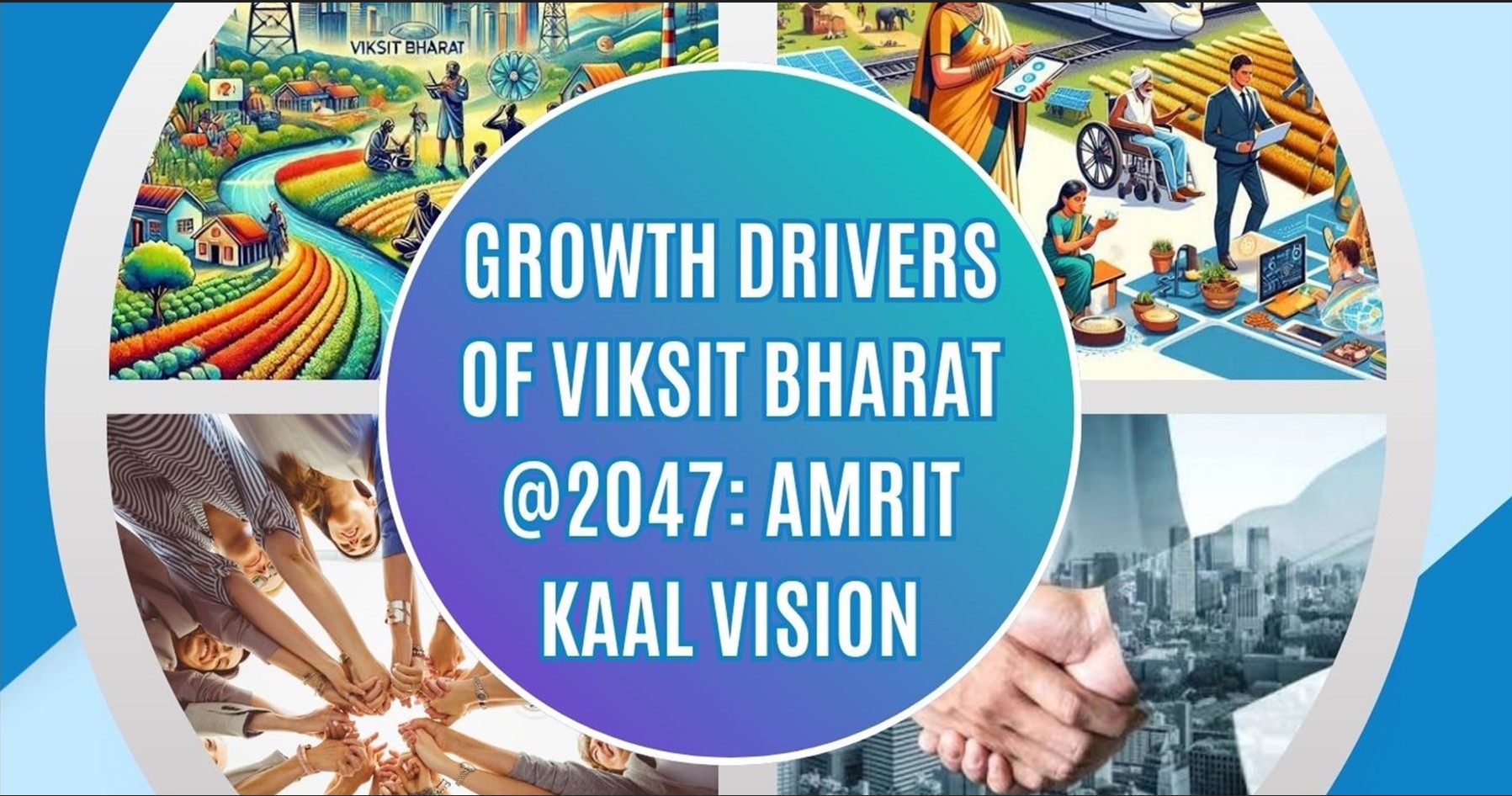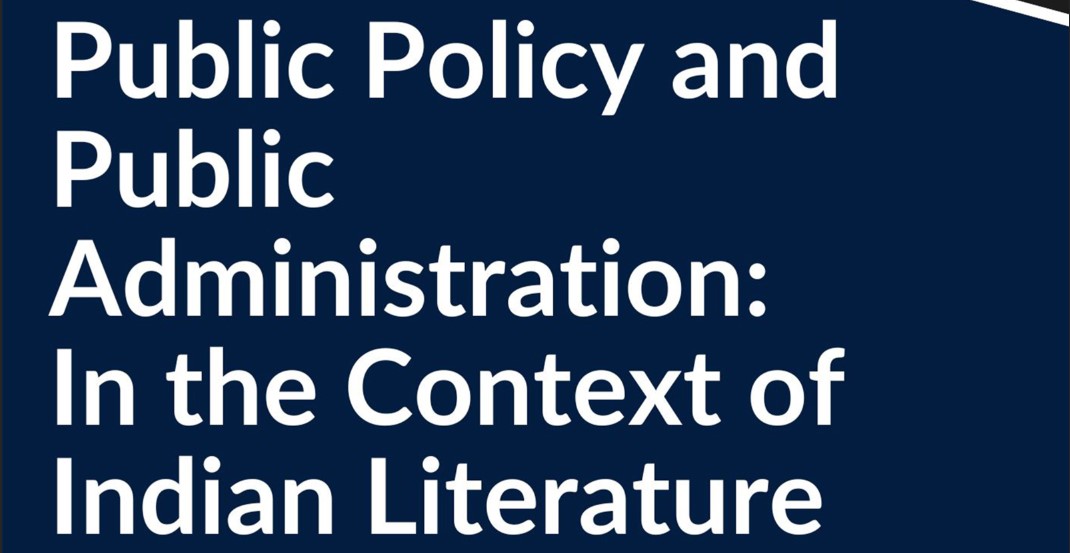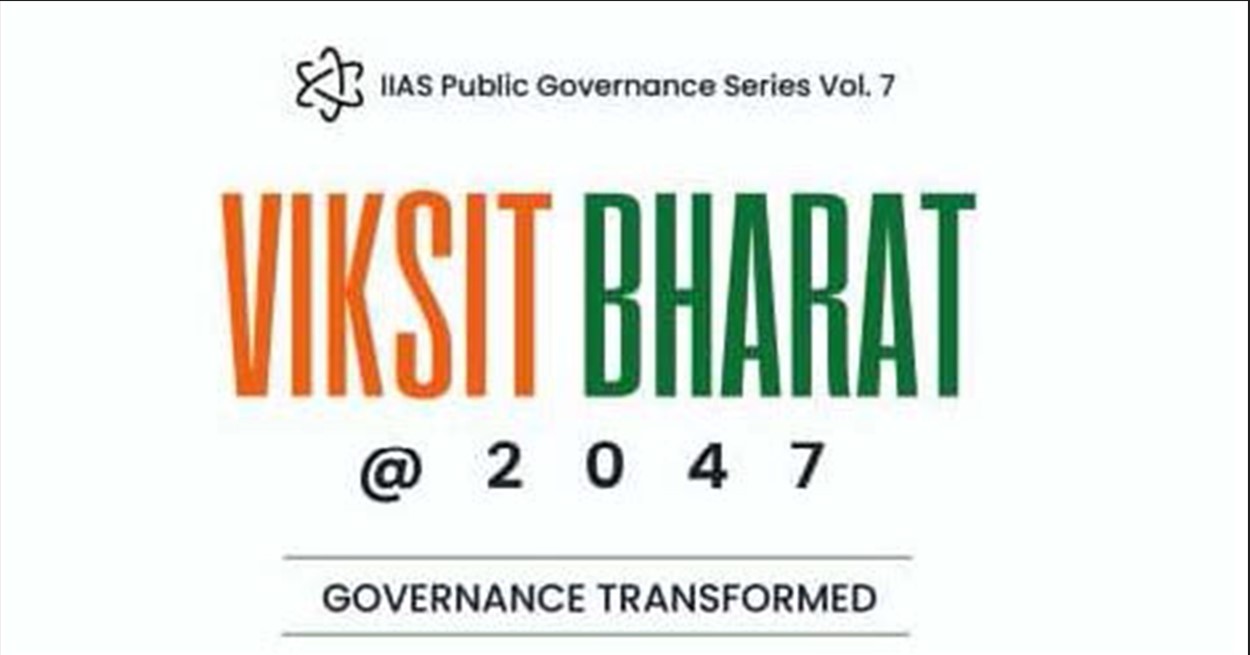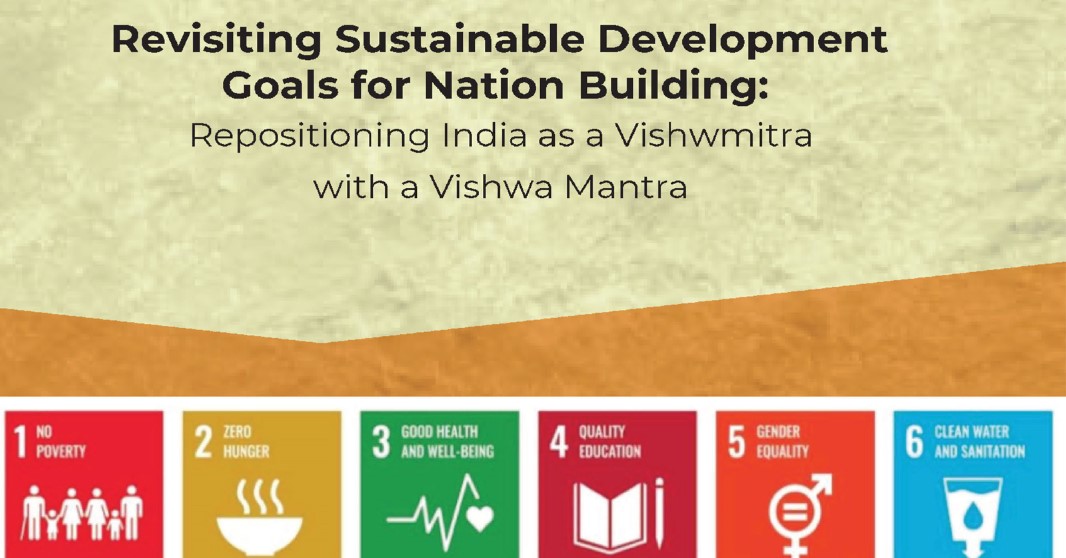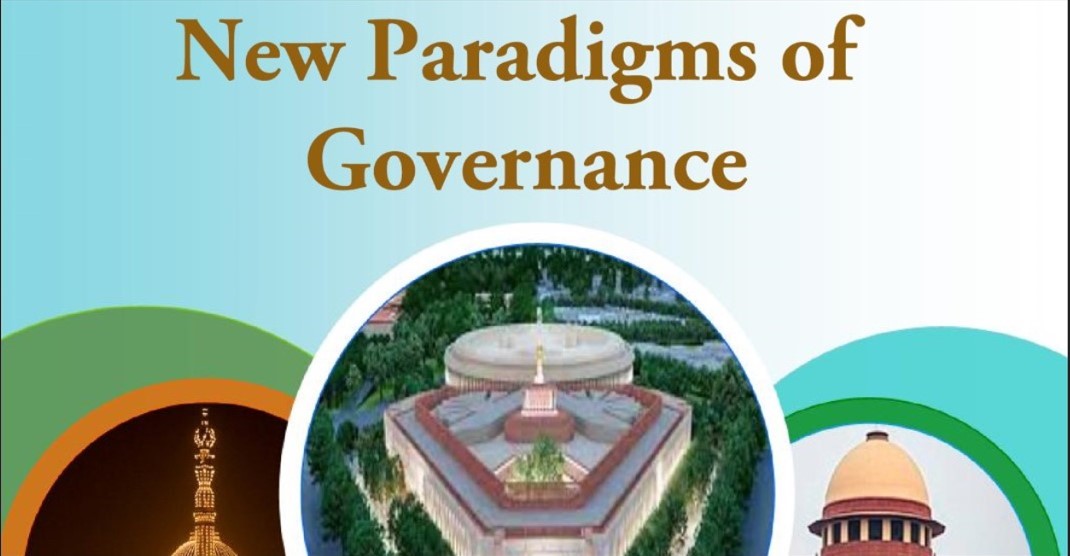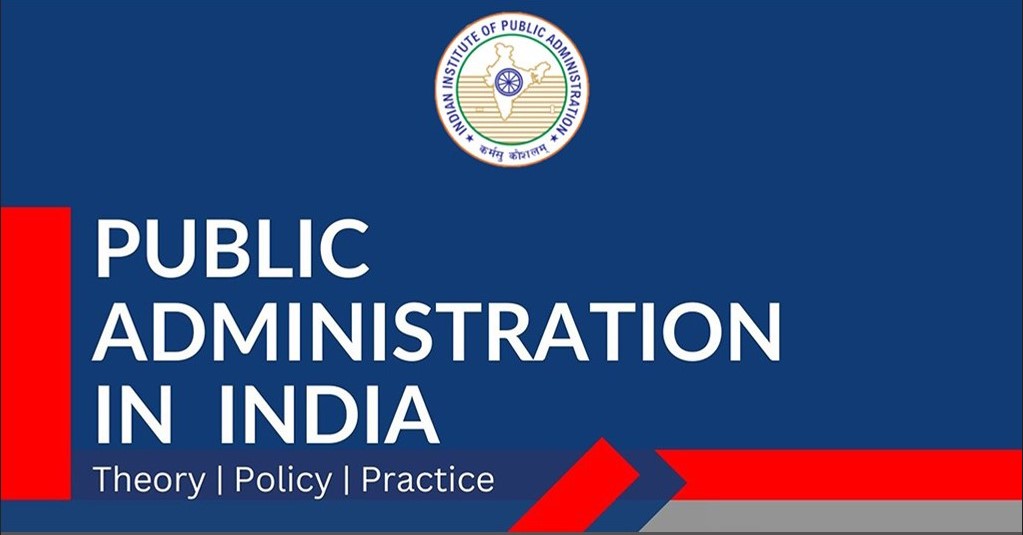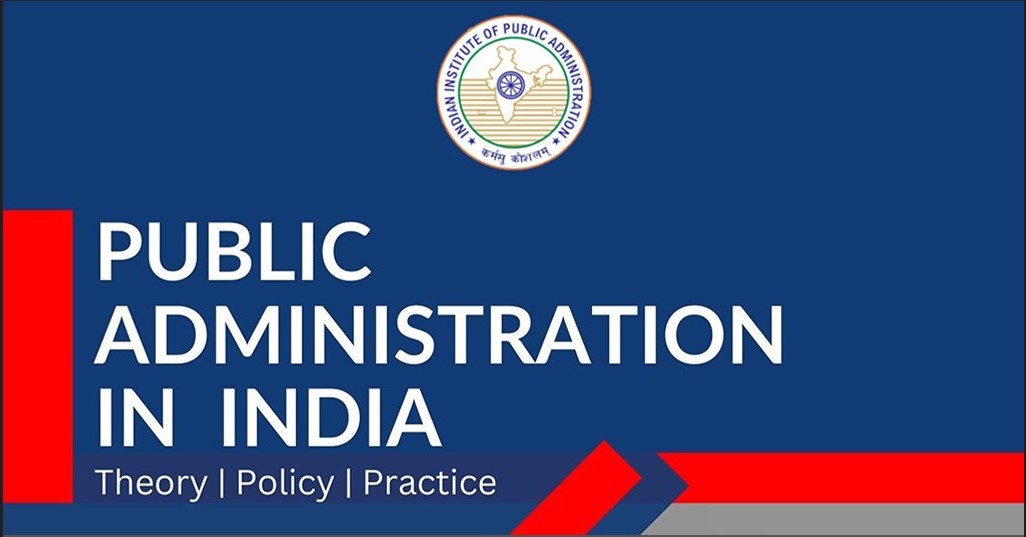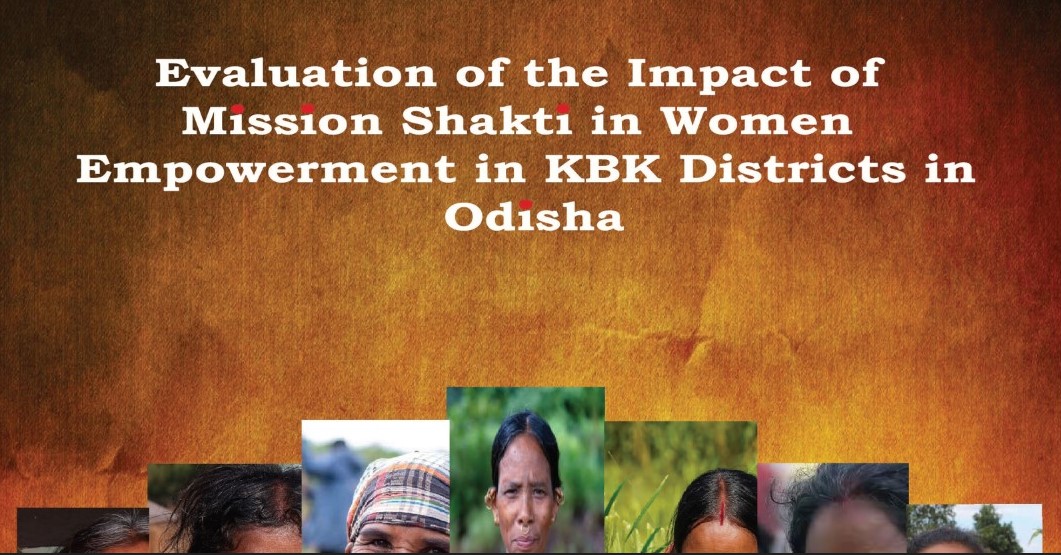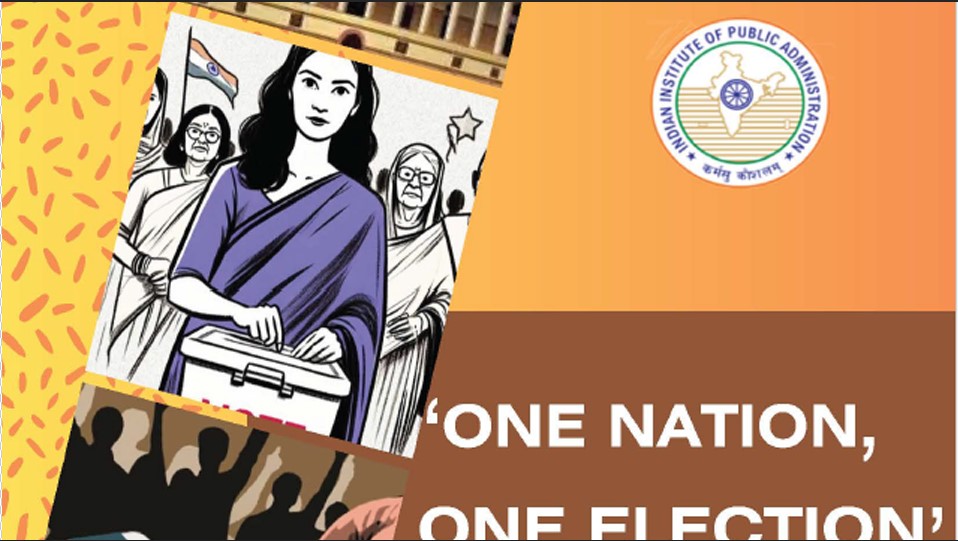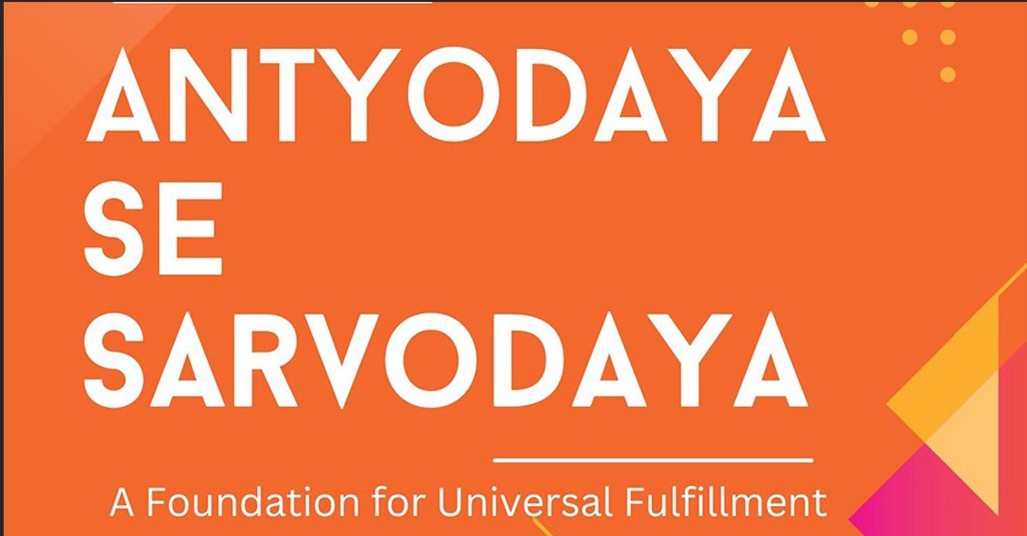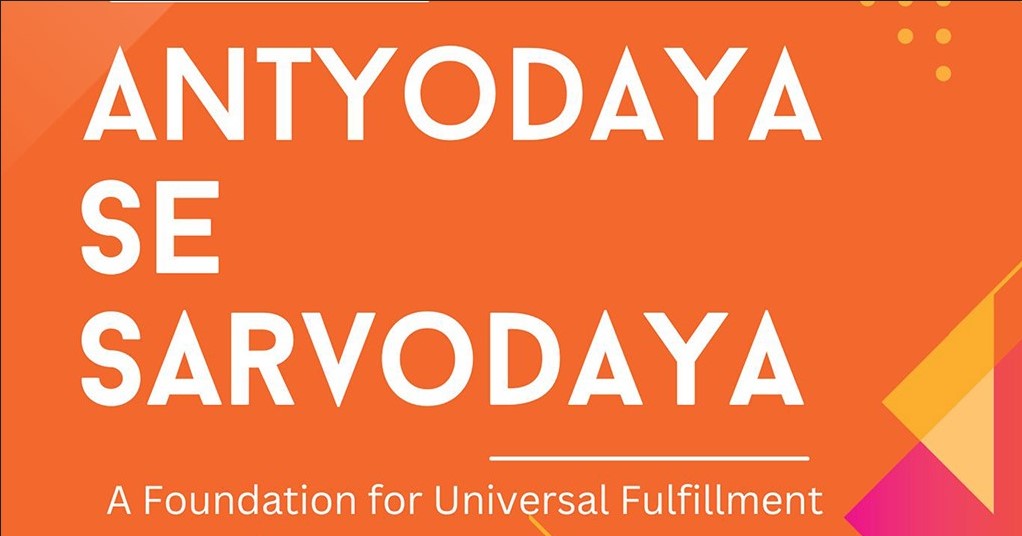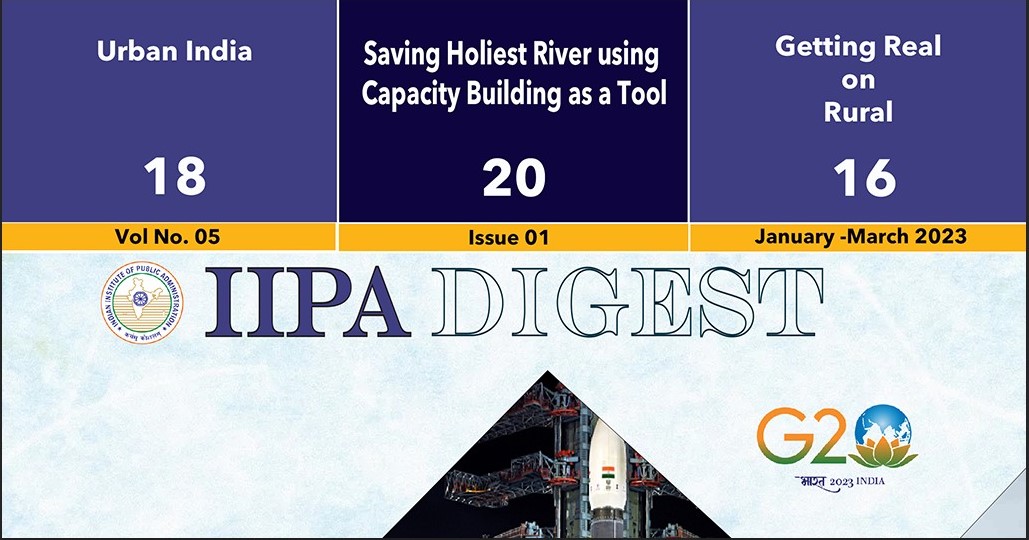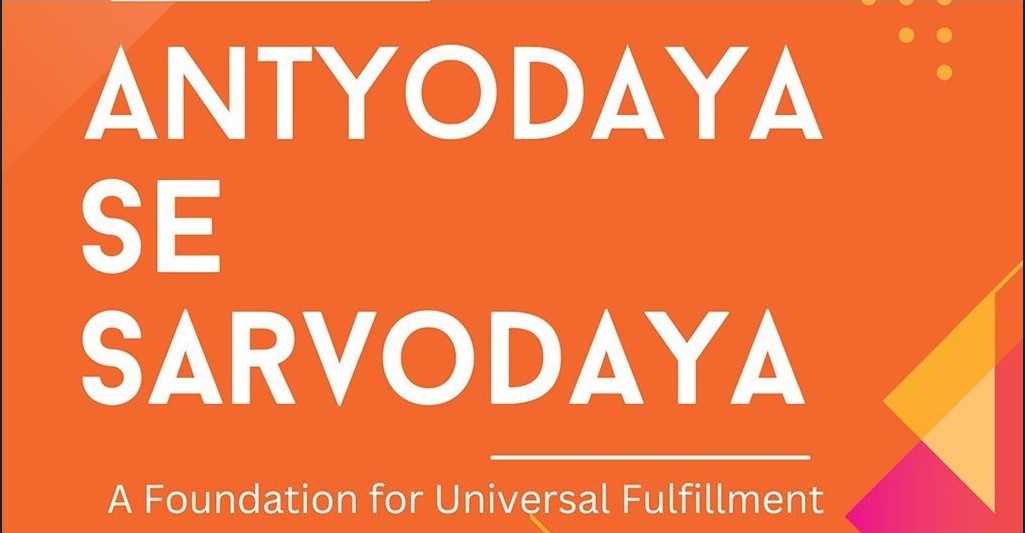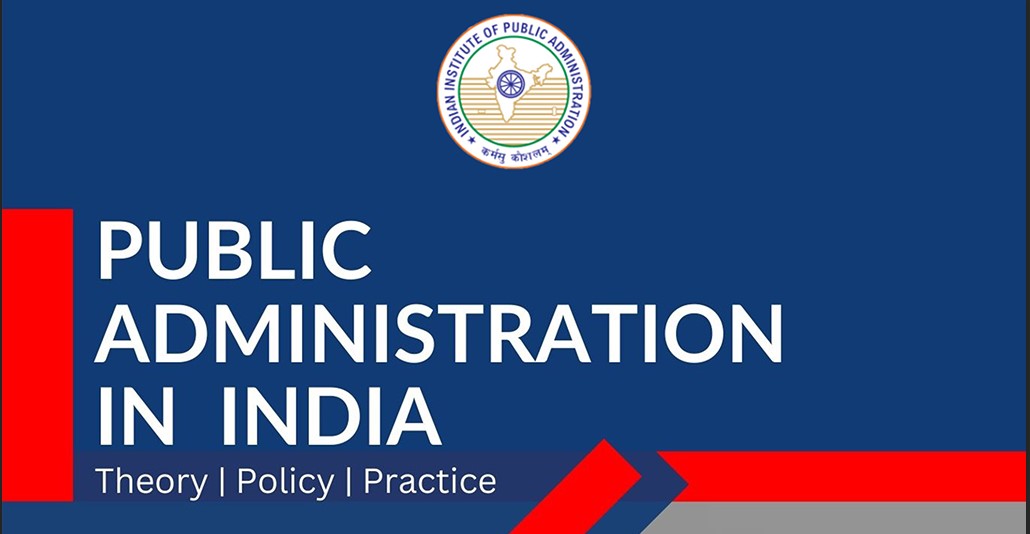The Role of Women in Panchayati Raj Governance and Rural Development in Karnataka
Abstract
This paper explores the pivotal role of women in Panchayati Raj governance and rural development in Karnataka, a state known for its socio-cultural diversity and extensive rural landscape. While constitutional provisions and affirmative action policies have facilitated greater female representation in Panchayati Raj Institutions (PRIs), challenges such as patriarchal norms, limited access to resources, and gender biases continue to affect the extent and effectiveness of women’s participation. Drawing on data from NITI Aayog, the Ministry of Rural Development, and the Karnataka Panchayati Raj Commissionerate, the study analyzes trends in women’s representation and assesses their impact on local governance and community development. The research highlights the positive influence of women leaders and Self-Help Groups (SHGs) in driving grassroots initiatives, improving service delivery, and enhancing socio-economic outcomes in rural areas. Case studies and statistical analyses reveal strong correlations between women’s participation in governance and improvements in education, health, and income indicators. The paper concludes with recommendations for strengthening gender-sensitive governance, proposing targeted policy reforms and capacity-building efforts to foster inclusive rural development. It argues that empowering women in local governance is not only a matter of equity but also a strategic imperative for sustainable and holistic rural progress in Karnataka.
Keywords: Panchayati Raj institutions, self-help groups, women, governance, rural development, Karnataka.
1. Introduction
The landscape of rural governance in India is profoundly shaped by the Panchayati Raj system, which serves as a cornerstone for decentralized governance and local self-administration. Introduced through the 73rd Amendment to the Indian Constitution in 1992, the Panchayati Raj system aimed to enhance democratic governance at the grassroots level by empowering local communities to make decisions that affect their lives. Integral to this system is the inclusion of women, whose participation has the potential to transform local governance, improve accountability, and foster development outcomes that address the specific needs of rural populations. In Karnataka, a state characterized by its rich cultural diversity, agricultural economy, and significant rural population, the role of women in Panchayati Raj institutions (PRIs) is increasingly recognized as critical for effective local governance.
This paper attempts to answer critical questions: What factors enable or inhibit women's involvement in local governance? How do women leaders influence community development and policy decisions? What are the impacts of women-led initiatives on the socio-economic conditions of rural households? The paper endeavours to address these questions, based on information from various governmental sources, including reports from NITI Aayog, the Ministry of Rural Development, and the Panchayati Raj Commissionerate of Karnataka. Furthermore, the role of Self-Help Groups (SHGs) as vehicles for women's empowerment will be examined, highlighting how these grassroots organizations contribute to economic self-sufficiency and enhance women’s voices within the local governance framework. By fostering collaboration and support among women, SHGs can challenge traditional notions of gender roles and provide a platform for women to engage in leadership and community development effectively.
This paper is situated within the broader discourse on gender equality and sustainable development, advocating that empowering women in Panchayati Raj is not only essential for achieving social justice but also vital for fostering inclusive and sustainable economic growth in rural areas. Ultimately, the insights from this study will inform policymakers and practitioners about the necessary steps to strengthen women's roles in governance, enhance the effectiveness of local institutions, and ensure that rural development strategies meet the diverse needs of communities in Karnataka.
2. Women in Rural Karnataka
2.1 Demographic Profile of Women in Rural Karnataka
Karnataka, located in southern India, is home to a diverse population of over 68 million people, with approximately 56% living in rural areas. Women, who form nearly half of the rural population, play a crucial role in the social, economic, and cultural fabric of these communities. Understanding the demographic profile of these women is essential to appreciating their contributions and the challenges they face. In recent years, literacy rates for women in Karnataka have shown significant improvement. According to the 2011 Census, the female literacy rate in Karnataka was around 68.10%, which is a notable increase from previous decades. However, disparities exist between rural and urban areas, with rural women's literacy rates lagging at approximately 58%. Women in rural Karnataka mainly work on agriculture and associated work, apart from working in small-scale industries, handicrafts, etc. In most villages, Self Help Groups (SHGs) have been formed by rural women who have created employment for themselves, notably the women drivers for solid waste management schemes as enumerated below.
However, rural women face challenges with socioeconomic constructs, with limited availability of resources for them to meet their needs. Also prevalent are the challenges of Health and nutrition, primarily owing to maternal and child health, especially in Karnataka. Lastly, is the challenge of Gender based discrimination, which is faced by women in rural Karnataka, apart from domestic violence? Addressing violence against women is further complicated by the lack of effective support systems and legal recourse, discouraging many women from seeking help. Traditional gender roles and societal expectations also restrict women's mobility and opportunities for engagement in community and political life. Discrimination in land ownership, inheritance rights, and access to education further entrenches these inequalities.
2.2 Educational Attainment
While there have been improvements in female literacy rates, significant gaps in educational attainment remain, particularly among marginalized groups such as Scheduled Castes (SC), Scheduled Tribes (ST), and Other Backward Classes (OBC). Factors such as poverty, cultural norms, and inadequate facilities contribute to high dropout rates among girls. Education is crucial for empowering women, and efforts must be made to ensure that girls stay in school and complete their education. Understanding the demographic profile and socio-economic challenges of women in rural Karnataka illuminates the critical need for targeted interventions that address these issues holistically. By improving educational access, economic opportunities, healthcare, and addressing social norms that perpetuate discrimination and violence, stakeholders can empower women to take on leadership roles within their communities, particularly in the context of Panchayati Raj governance.
3. Historical Context and Evolution of the Panchayati Raj System
3.1 The Historical Background of Local Governance in India
The roots of local governance in India can be traced back to ancient times when village councils, known as "sabhas," played a significant role in community decision-making.
3.2 Constitutional Framework and the 73rd Amendment
A landmark development in the evolution of local governance was the enactment of the 73rd Constitutional Amendment in 1992. This amendment aimed to revitalize the Panchayati Raj system and enhance its role in India's democratic framework. Key features of the 73rd Amendment include:
a. Three-tier Structure. The amendment mandates the establishment of a three-tier system for Panchayati Raj in every state, ensuring decentralized governance and local self-governance.
b. Reservation for Women. One of the most significant provisions is the reservation of one-third of the total number of seats for women in all PRIs. This empowers women politically and promotes their representation in local governance.
c. Elections and Tenure. The amendment laid down the framework for regular elections to the Panchayati Raj institutions, ensuring that elected representatives are accountable to their constituents every five years.
d. State Legislative Power. It grants state legislatures the authority to enact laws to regulate the composition of Panchayati Raj institutions, their powers, and the election process, allowing for contextual adaptations to meet regional needs.
These constitutional provisions have played a crucial role in enhancing the participation of marginalized groups, particularly women, in local governance. The 73rd Amendment marked a significant shift from a predominantly male-dominated governance structure to one that actively encourages female representation.
3.3 The Evolution of Panchayati Raj in Karnataka
Karnataka has embraced the principles of Panchayati Raj since the 1957 implementation of the system. The state has been a pioneer in promoting local self-governance through a series of legislative and administrative reforms that strengthen the role of PRIs. Karnataka Panchayat Administrative Service, popularly known as KPAS, is the civil service of Karnataka state in India. The Rural Development and Panchayat Raj Department conducts exams to recruit candidates for the service. The KPAS officers are usually appointed as Panchayat Development Officers, known as PDOs. They are trained under the Abdul Nazeer Sab State Institute of Rural Development and Panchayat Raj (ANSSIRD PR), Mysuru.
3.3.1 Early Initiatives
In Karnataka, the initial steps towards establishing a formal Panchayati Raj system were taken under the Mysore Village Panchayati Act of 1959, which sought to create a decentralized governance framework. The introduction of this act marked the beginning of organized local governance in the state, enabling village-level councils to manage local affairs, implement development projects, and engage with government agencies.
3.4 Role of Women in Karnataka’s Panchayati Raj
With the 73rd Amendment, Karnataka took significant strides in enhancing women’s participation in PRIs. The state government established a policy of reserving a minimum of 33% of seats for women in PRIs, leading to increased representation of women in local governance. By 2020, women constituted about 50% of members in various Gram Panchayats across Karnataka, reflecting the state’s commitment to gender equality in governance.
3.5 Capacity-Building and Empowerment Initiatives
Recognizing the need to empower women leaders within PRIs, the government of Karnataka, along with various non-governmental organizations (NGOs) and international agencies, has implemented several capacity-building initiatives. These programs focus on providing training, resources, and support to women elected representatives, equipping them with the necessary skills to effectively contribute to decision-making processes and community development.
3.6 Current Status and Challenges
Despite the advancements in women’s representation in Panchayati Raj institutions in Karnataka, several challenges remain. Although women occupy seats in local governance, they continue to face numerous barriers that limit their agency and influence. Studies show that socio-cultural norms, lack of economic resources, and inadequate access to information hinder active participation in governance. While women participate in these institutions, their roles are often confined to traditional and supportive tasks rather than leadership positions. The phenomenon of "proxy leadership," where male members make decisions on behalf of elected women representatives, remains prevalent in some areas. This underscores the need for greater empowerment and agency among female leaders. The Karnataka Panchayat Raj Commission is organized as below:
Figure 1: Karnataka Panchayat Raj Commissionerate
4. Women's Participation in Panchayati Raj Governance
4.1 Overview of Women's Representation in PRIs
The representation of women in Panchayati Raj institutions (PRIs) has been a transformative aspect of local governance in Karnataka. Since the implementation of the 73rd Constitutional Amendment, the state has witnessed a significant increase in women's participation in local governance. The reservation of one-third of the total seats for women in all tiers of PRIs, Gram Panchayat, Panchayat Samiti, and Zilla Parishad, has led to the election of numerous women as village representatives. As of 2020, approximately 50% of the elected members in various Gram Panchayats in Karnataka are women. This shift in representation has not only altered the gender dynamics within PRIs but has also increased the visibility of women’s issues in local governance, prompting a more inclusive approach to development planning and policy formulation.
4.2 Roles and Contributions of Women in PRIs
The Karnataka Panchayat Raj Commissionerate is headed by Dr. Arundathi Chandrasekhar, IAS, Commissioner, and Panchayat Raj. The CEO of Bengaluru Rural Zilla Panchayat is Dr. Anuradha K.N.
4.3 Socio-Cultural Norms
Socio-cultural factors often play a crucial role in limiting women’s participation in PRIs. Traditional gender roles and societal expectations can discourage women from seeking leadership positions or participating actively in decision-making processes. Many women face scrutiny and criticism from their families and communities for choosing public life over domestic responsibilities, leading to a conflict between personal ambitions and societal expectations.
4.4 Limited Capacity and Resources
Although training programs have increased women’s skills and knowledge, many still face limitations regarding access to resources and information. Inadequate support systems and a lack of mentorship can hinder their ability to compete effectively in local governance. Additionally, women from marginalized communities may have limited access to networks that can provide support and guidance.
4.5 Proxy Leadership and Male Dominance
The phenomenon of proxy leadership remains prevalent in Karnataka, where elected women representatives may defer decision-making to male relatives or party leaders. This situation often stems from entrenched power dynamics within communities, where men continue to dominate political discourse. Such proxy leadership not only undermines women's autonomy but also diminishes the potential impact of their elected roles.
4.6 Lack of Political Will and Support
Political will from higher levels of government is crucial for the effective functioning and sustainability of PRIs. Women leaders often face challenges in securing funding and support for local initiatives due to bureaucratic hurdles and a lack of commitment from local authorities.
4.7 Case Studies of Successful Women Leaders in Karnataka
To illustrate the impact of women in Panchayati Raj Institutions, this paper presents several case studies of successful women leaders in Karnataka who have made notable contributions to their communities.
4.7.1 Case Study: Ms. Leelavathi, PDO and Ms. MP Veena, President, Gram Panchayat, Hemanahalli Gram Panchayat, Mandya District.
Elected as the head of her Gram Panchayat at Hemanahalli Village, Mandya District, Ms. MP Veena, along with Ms. Leelavathi, PDO, Hemanahalli, have been doing tremendous work towards bringing in multi-level changes in improving the living conditions, education, and environmental facilities in the Gram Panchayat. The various initiatives that both these women leaders have taken are not only limited to the implementation of the Central and State Government schemes and timely and proper execution of the projects and funds, but also garner the resources/ donors available within the village and improve the infrastructure in the Panchayat. The Koosine Mane and Arivu Kendra (Digital Library) implemented in the village is noteworthy. The GP has received many awards from 2016-17 to 2020-21, including the State GPDP awards of R.10 Lakhs, Child Friendly Gram Panchayat National Award, Nanaji Deshmukh Rashtriya Gaurav Gram Sabha Purashkar (NDRGGSP), and HD Chowdaiah State Rural Development Award.
Figure 2:Distribution of school uniform, sports items and laptops to Anganavadi and school children by G.P
Figure 3: Kooaina mane (Child care center)
Figure 4: Pictures from the field
Figure 5: Digital Library Children’s Zone
4.7.2 Case Study: Sunitha K. from Chitradurga District
Elected as the head of her Gram Panchayat, Sunitha has been instrumental in initiating a comprehensive sanitation program that transformed her village’s sanitation facilities. Collaborating with NGOs and local health authorities, she organized awareness campaigns, trained women in hygiene practices, and facilitated the construction of toilets in homes that lacked proper sanitation. Her leadership has resulted in a significant reduction in waterborne diseases in the community.
4.7.3 Case Study: Renuka S. from Belagavi District
Renuka, a member of the Panchayat Samiti, has been an advocate for girls’ education in her rural community. Recognizing the high dropout rates among girls, she launched a program to provide scholarships and educational materials, working with local schools to ensure that girls have access to quality education. Her efforts have led to improved enrollment and retention rates for girls in higher secondary education.
4.7.4 Case Study: Lakshmi R. from Mysore District
Lakshmi, a Zilla Parishad member, has focused on promoting women’s economic empowerment through SHGs. By facilitating skill development workshops and improving access to credit for women entrepreneurs, she has successfully increased the number of women-owned businesses in her district. This initiative has not only bolstered local economies but has also empowered women to become financially independent and active participants in governance. The participation of women in Panchayati Raj institutions in Karnataka has ushered in a new era of governance characterized by inclusivity and community-oriented development. While significant progress has been made in enhancing women's representation and contributions, persistent barriers must be addressed to ensure that women can fully realize their potential as effective leaders in local governance.
5. Impact of Women’s Participation in Panchayati Raj on Rural Development
The inclusion of women in Panchayati Raj institutions (PRIs) has profound implications for rural development in Karnataka. As key decision-makers and representatives of their communities, women often bring unique perspectives and priorities that can enhance development outcomes. This chapter explores the multifaceted impact of women’s leadership in PRIs, focusing on areas such as health, education, sanitation, economic empowerment, and community mobilization. By examining case studies and data, we assess how women’s participation contributes to sustainable development in rural Karnataka.
5.1 Women’s Contributions to Health and Nutrition
5.1.1 Improved Health Outcomes
Research indicates that when women participate in PRIs, there is a significant association with improved health outcomes in their communities. Women leaders are more likely to prioritize healthcare initiatives, advocate for maternal and child health services, and address issues related to malnutrition. For instance, women in PRIs have spearheaded awareness campaigns about immunization, reproductive health, and sanitation, leading to increased access to essential healthcare services.
Figure 6: Grama Arogya Health camp Data
5.1.2 Addressing Malnutrition
Malnutrition remains a critical challenge in rural Karnataka, impacting children's growth and development. Women representatives in PRIs have initiated programs that focus on improving nutrition through community kitchens (anganwadis) and supplementary feeding programs. By mobilizing resources and collaborating with health departments, these women have successfully reduced malnutrition rates in their villages.
Figure 7: Pictures from the field
Figure 8: Powshtika Ahara Mela
5.2 Enhancements in Education
There are 5,889 Gram Panchayat Libraries named “Arivu Kendras” in the state, and 5758 libraries upgraded to digital libraries. Also, 49.21 lakh children are registered in Gram Panchayat libraries, and 6599 libraries are being planned to be opened in villages where there are no libraries.
Figure 9: Library Infrastructure
Figure 10: Arivu Kendra in Hemanahalli Gram Panchayat
Figure 11: Arivu Kendra Interactions
5.3 Increased Enrollment and Retention Rates
Women’s participation in PRIs has been linked to enhanced educational outcomes, particularly for girls. Female leaders often prioritize educational initiatives, advocating for better school facilities, teacher training, and financial support for families to send their daughters to school.
5.4 Gender-Sensitive Policies
Women in PRIs have pushed for gender-sensitive policies that encourage girls to pursue education. This advocacy has resulted in the implementation of scholarship programs, transportation services for girls, and awareness campaigns about the importance of girls’ education.
5.5 Improvements in Sanitation and Cleanliness
5.5.1 Access to Clean Drinking Water and Toilets
Women in PRIs have played a crucial role in improving sanitation and access to clean drinking water in rural areas. Their understanding of household needs and community issues allows them to advocate effectively for infrastructure investments in sanitation facilities and clean water sources.
Figure 12: Pictures from the field
5.5.2 Swachh Bharat Mission Implementation
Through the Swachh Bharat Mission, many women leaders have taken initiatives to promote cleanliness and hygiene practices in their villages. They lead community clean-up drives, educate households about waste management, and work towards ensuring that every household has access to toilets. In a village in the Mysuru district, the women-led Gram Panchayat implemented a successful sanitation project that included toilet construction and awareness sessions on hygiene practices. Over two years, the village became open defecation-free, significantly improving public health outcomes.
5.6 Economic Empowerment and Livelihood Development
5.6.1 SANJEEVINI - Karnataka State Rural Livelihood Promotion Society – KSRLPS
The Karnataka State Rural Livelihood Mission has been named ‘Sanjeevini’. Sanjeevini is implemented in the State through a registered society called the Karnataka State Rural Livelihood Promotion Society. Bengaluru Rural District in 2017-18 onwards started a saturation approach (Formation of federation). NRLM, DDUGKY are all centrally sponsored schemes, and the funding ratio is 60:40 under the central and state sectors. The RSETI programme is 100% centrally funded.
Figure 13: Sanjeevini – Community Based Institutions
Figure 14: SHG
Figure 15: Databank
5.6.2 Promotion of Self-Help Groups (SHGs)
Women in PRIs have been at the forefront of promoting economic empowerment through Self-Help Groups (SHGs). These groups provide a platform for women to pool resources, obtain micro-credit, and engage in income-generating activities. The SHGs have also become important networks for entrepreneurship, skill development, and advocacy.
Table 1: Database of SHG
Figure 16: SHG Women in Hemanahalli village are involved in the SWM Scheme
Figure 17: SHG Women Drivers in the Solid Waste Management (SWM) Scheme
5.7 Financial Independence and Decision-Making
Women leaders advocate for policies that support women’s entrepreneurship, leading to increased participation of women in local economies. Training programs on financial literacy, vocational skills, and business management facilitate economic independence, enabling women to contribute not only to their households but also to community development. In the Kolar district, a female Zilla Parishad leader championed the formation of SHGs that focused on traditional crafts, such as weaving and pottery. By facilitating access to markets and training workshops, these SHGs empowered hundreds of women to earn a sustainable income, enhancing their social and economic status within the community.
5.8 Community Mobilization and Social Cohesion
Figure 18: Artisans
5.9 Empowering Marginalized Groups
Women in PRIs often serve as advocates for marginalized communities, promoting the inclusion and representation of Scheduled Castes (SC), Scheduled Tribes (ST), and other disadvantaged groups. Their leadership fosters social cohesion and integrates diverse voices into the decision-making process.
5.10 Bridging Gaps between Government and Communities
Women leaders act as vital links between government institutions and local communities. By facilitating dialogues and encouraging participation in village meetings, they ensure that the concerns of the community are heard and addressed by local authorities. This bridging role enhances accountability and transparency in governance. A group of women representatives in a village in the Raichur district organized regular Gram Sabha meetings that were inclusive of all community members. They ensured that the perspectives of marginalized groups were prioritized during discussions, leading to a more equitable approach to local governance and resource distribution.
5.11 Challenges that Limit the Impact of Women’s Participation
Despite the notable improvements facilitated by women in PRIs, several challenges continue to limit their impact on rural development. These challenges include:
a. Socio-Cultural Resistance. Persistent traditional beliefs about gender roles can undermine women’s authority and limit community engagement.
b. Resource Constraints. Limited access to financial and technological resources can hinder the execution of development projects led by women.
c. Political Challenges. The influence of male-dominated political structures can lead to tokenism, where women's contributions are often minimized or overshadowed.
The participation of women in Panchayati Raj institutions in Karnataka has demonstrably enriched rural development outcomes across various domains, including health, education, sanitation, and economic empowerment. Their unique insights and priorities have enhanced the effectiveness of governance, ensuring that development initiatives are more inclusive and responsive to community needs.
6. Strategies and Recommendations for Strengthening Women’s Leadership in Panchayati Raj
As seen in the previous chapters, women’s participation in Panchayati Raj institutions has a significant impact on rural development outcomes in Karnataka. To maximize this potential, it is essential to develop and implement strategies that strengthen women’s leadership roles within PRIs. This chapter outlines effective strategies and policy recommendations aimed at empowering women leaders, enhancing their capabilities, and ensuring their voices are integral to local governance.
6.1 Strengthening Capacity-Building Initiatives
6.1.1 Comprehensive Training Programs
To empower women in PRIs, comprehensive training programs should be established that focus on governance, leadership skills, negotiation techniques, and financial literacy. These programs should be tailored to address the specific needs of women leaders and include:
a. Workshops and Seminars. Regular workshops that cover topics such as budget management, project planning and community mobilization can equip women with essential skills.
b. Mentorship Programs. Pairing experienced women leaders with new entrants can provide guidance and practical insights into effective governance and decision-making processes.
6.2 Use of Technology in Training
Leveraging technology can enhance the accessibility and reach of capacity-building initiatives. Online platforms can be created to facilitate virtual training sessions, webinars, and resource sharing, enabling women from remote areas to participate and benefit from these programs.
6.3 Enforcing Reservations and Quotas
To sustain and enhance women’s representation in PRIs, it is critical to enforce and expand existing reservations and quotas. While the 33% reservation policy has positively impacted women’s participation, Karnataka has increased this quota to 50%, especially in leadership positions within PRIs.
6.4 Gender Mainstreaming in Local Governance
Policies at both the state and national levels should reflect a commitment to gender mainstreaming in local governance. This involves not just ensuring women’s representation but also integrating a gender perspective in all development policies and programs. Training local elected bodies on gender-sensitive governance can help in identifying and addressing the specific needs of women in the community.
6.5 Enhancing Financial Resources and Support
6.5.1 Access to Funds for Women-led Initiatives
Creating dedicated funding mechanisms for women-led initiatives in PRIs can empower women leaders to implement projects that address their communities' challenges. Governments should provide grants and microloans to women representatives to facilitate self-help groups (SHGs) and entrepreneurial ventures.
6.6 Collaboration with NGOs and International Organizations
State governments can collaborate with NGOs and international organizations that specialize in women’s empowerment and local governance. Such partnerships can help provide technical assistance, training, and financial resources aimed at enhancing women’s leadership capacities in PRIs. The State has entered into MoUs with CSOs such as Adhyayan Foundation, Akanksha Charitable Trust, Nature Conservation Foundation, Shikshana Foundation, Indian Institute of Astrophysics.
6.7 Fostering Inclusive Governance Practices
6.7.1 Encouraging Participation of Marginalized Groups
To make governance more inclusive, PRIs should encourage the active participation of marginalized groups, including Scheduled Caste (SC) and Scheduled Tribe (ST) women, as well as women with disabilities. Ensuring diverse representation can help articulate the unique needs and perspectives of these groups in local governance.
6.8 Regular Community Engagement Sessions
Organizing community engagement sessions can foster dialogue between women leaders and their constituents. Such platforms can serve as a space for women to discuss community issues, collect feedback, and involve community members in decision-making processes, thereby enhancing transparency and accountability.
6.9 Addressing Socio-Cultural Barriers
6.9.1 Public Awareness Campaigns
To change societal attitudes towards women in leadership, public awareness campaigns should be launched to educate communities about the importance of women’s participation in governance. These campaigns can challenge stereotypes and promote successful women leaders as role models to inspire others.
6.10 Engaging Men as Allies
Engaging men in discussions about gender equality and women’s empowerment is crucial. By fostering a culture of collaboration between men and women, communities can work together to dismantle systemic barriers that hinder women’s participation in PRIs.
6.11 Monitoring and Evaluation
6.11.1 Establishing Robust Monitoring Mechanisms
Creating monitoring systems to track the progress of women’s participation in PRIs is essential. These systems should assess women's leadership roles, the effectiveness of policies aimed at improving their participation, and the socio-economic outcomes stemming from women-led initiatives.
6.11.2 Feedback Mechanisms
Implementing feedback mechanisms that allow women leaders to share their experiences and challenges can help policymakers adjust strategies and resources to better support women in PRIs. Regular assessments can identify gaps in capacity-building programs and inform targeted interventions. Strengthening women’s leadership in Panchayati Raj institutions is pivotal to enhancing local governance and improving rural development outcomes in Karnataka. By investing in capacity-building initiatives, promoting gender-sensitive policies, ensuring financial resources, fostering inclusive governance practices, and actively addressing socio-cultural barriers, we can create a more equitable and effective local governance framework.
7. Conclusion and Future Directions
7.1 Summary of Key Findings
This report has provided an in-depth exploration of the participation of women in Panchayati Raj institutions (PRIs) in Karnataka, highlighting both their contributions to rural development and the challenges they face. The key findings can be summarized as follows:
a. Increased Representation and Impact. Women’s representation in PRIs, particularly due to the 33% reservation policy, has significantly increased since its implementation. Their participation has contributed to more inclusive decision-making processes, leading to positive changes in community health, education, sanitation, and economic empowerment.
b. Leadership Roles and Community Development. Women leaders in PRIs have shown exceptional ability to advocate for their communities, addressing critical issues such as maternal and child health, education for girls, and sanitation facilities. Their initiatives have often resulted in tangible improvements in the quality of life for rural residents.
c. Barriers to Effective Participation. Despite these achievements, women still encounter significant barriers, including socio-cultural norms that limit their roles, limited access to resources and training, and the prevalence of proxy leadership where male relatives dominate decision-making. Addressing these barriers is crucial for sustaining and enhancing women’s contributions.
d. Best Practices and Success Stories. The paper has highlighted several case studies of successful women leaders who have spearheaded community initiatives, demonstrating the potential of women in overcoming adversity and driving change. These examples serve as models for future efforts to empower women in PRIs.
e. Need for Systemic Change. Effective transformation requires systemic change, including supportive policies, increased funding for women-led initiatives, and community engagement to foster an environment that encourages women’s leadership.
7.2 Recommendations for Future Action
Building upon the findings of this report, several recommendations emerge for policymakers, community organizations, and stakeholders aimed at enhancing women's leadership in PRIs and, consequently, the overall development of rural Karnataka:
a. Enhancing Capacity-Building Programs. Expand and diversify capacity-building initiatives to equip women leaders with the skills necessary for effective governance. Programs should focus on governance training, financial literacy, and advocacy skills, using technology to widen reach.
b. Strengthening Gender-Sensitive Policies. Implement and enforce gender-sensitive policies that not only increase the representation of women in leadership positions but also ensure their active participation in decision-making processes. This could involve reviewing and enhancing existing policies that support women’s empowerment in governance.
c. Increasing Financial Support for Women-led Initiatives. Establish dedicated funding streams at both the state and central levels to support women-led projects in PRIs. Providing grants and low-interest loans can foster entrepreneurship among women and help sustain community development initiatives.
d. Community Awareness Campaigns. Launch public awareness campaigns that challenge existing gender stereotypes and promote the importance of women’s leadership in local governance. Highlighting successful examples of women leaders can inspire greater acceptance and support from the community.
e. Men as Change Agents. Engage men as advocates for gender equality in governance, encouraging them to support women in leadership roles within PRIs. Men can play a critical role in changing attitudes and fostering an inclusive approach to community decisions.
f. Establishing Monitoring and Evaluation Frameworks. Create robust monitoring mechanisms to assess the effectiveness of policies aimed at enhancing women’s participation in PRIs. Regular evaluations can help identify gaps, successes, and areas for further improvement.
7.3 Future Research Directions
While this paper provides comprehensive insights, additional research could further illuminate the dynamics of women’s participation in PRIs. Potential areas for future research include:
a. Impact Assessment Studies. Conduct longitudinal studies to assess the long-term impacts of women’s leadership in PRIs on community development indicators, such as health outcomes, education levels, and local economic growth.
b. Comparative Studies. Explore comparative analyses between different states or regions to identify best practices and successful strategies that can be replicated to enhance women’s leadership in PRIs on a broader scale.
c. Exploring Intersectionality. Research should also consider the intersectional challenges faced by different groups of women, particularly those from marginalized communities, and how these challenges can be addressed to improve their participation effectively.
Women’s participation in Panchayati Raj institutions represents a crucial step toward achieving holistic rural development in Karnataka. By amplifying women’s voices and ensuring their leadership is valued, communities can foster more inclusive and effective governance structures. This report underscores the importance of continued efforts to empower women in PRIs, creating an environment that not only acknowledges their contributions but also actively supports their ambitions. Empowering women is not merely a matter of justice; it is a catalyst for sustainable development. As we move forward, it is imperative to commit to building a governance framework that embraces diversity, values equitable representation, and recognizes the transformative potential of women’s leadership in shaping the future of rural Karnataka.
8. Resources, Tools, and References for Empowering Women in Panchayati Raj Institutions
This portion of the paper provides supplementary resources, practical tools, and references that can aid stakeholders in implementing the recommendations outlined in this report regarding the empowerment of women in Panchayati Raj institutions (PRIs). These resources aim to facilitate training, advocacy, and effective governance practices that enhance women's leadership roles and contribute to sustainable rural development.
8.1 Resources for Capacity Building
8.1.1 Training Modules on Leadership and Governance
a. Women’s Leadership Training Manual. A comprehensive guide developed by various NGOs that includes modules on public speaking, negotiation skills, policy advocacy, and community engagement techniques.
b. Governance and Financial Management Handbook. A practical handbook designed for women leaders in local governance that addresses budget preparation, financial monitoring, and accountability.
c. E-Learning Platforms. Online platforms like Coursera and edX offer courses on leadership, gender studies, and public governance that can be accessed by women in PRIs.
8.1.2 Mentorship Programs
(a) Peer Mentorship Networks. Initiatives that connect experienced women leaders with newcomers in governance to provide guidance, share experiences, and best practices.
o Example: Women in Public Service Project (WPSP) provides mentorship opportunities connecting young women leaders with seasoned professionals.
(b) Local Mentorship Circles. Community-driven mentorship circles that encourage women leaders to share challenges and strategies for effective governance.
8.1.3 Advocacy and Community Awareness Tools
8.1.3.1 Advocacy Toolkits
a. Gender Advocacy Toolkit. Developed by local NGOs, this toolkit provides strategies for advocating for gender-sensitive policies in governance, including campaign planning and stakeholder engagement techniques.
b. Campaign Templates for Women’s Rights. Ready-to-use templates for organizing community awareness campaigns focusing on women’s leadership in PRIs. These include promotional materials, social media posts, and engaging content to raise awareness.
8.1.4 Public Awareness Campaigns
a. Storytelling Platforms. Initiatives where women leaders can share their stories through videos, blogs, and social media to inspire others and engage the community.
b. Community Workshops. Organizing workshops that involve both men and women in discussions about gender equality, leadership roles, and community development.
8.1.5 Financial Resources and Support Mechanisms
8.1.5.1. Funding Opportunities for Women-led Initiatives
a. Microfinance Institutions (MFIs). Organizations offering microcredit are specifically geared towards women entrepreneurs and community leaders.
b. Government Schemes. Information on various government schemes aimed at promoting women’s entrepreneurship and self-help groups, such as the Mahila Udyam Nidhi Scheme and National Rural Livelihood Mission (NRLM).
8.1.6 Grants and Scholarships
a. National and International Grants Programs. A list of organizations that provide grants for women-led initiatives, such as the Global Fund for Women and UN Women.
b. Scholarship Programs. Information about scholarships for women pursuing education in governance, public policy, and leadership studies.
8.2 Research and Data Resources
8.2.1 Research Publications
a. Gender and Governance Journals. Access to journals such as Gender, Place & Culture and Women's Studies International Forum that publish relevant research on women in governance and rural development.
b. Case Studies and Reports. Publications from International organizations like the World Bank and FAO provide insights on women’s roles in governance and rural development.
8.3. Data Collection and Analysis Tools
a. Community Needs Assessment Tools. Frameworks for conducting assessments that identify the specific needs of women in local governance, affecting their participation.
b. Surveys and Feedback Mechanisms. Tools that allow women leaders to collect community input on their experiences and suggestions for improvement in PRIs.
The successful implementation of strategies aimed at strengthening women’s leadership in Panchayati Raj institutions relies on extensive resources, collaborative efforts, and an ongoing commitment to gender equality in governance. By utilizing the tools, resources, and references outlined in this chapter, stakeholders can support women leaders in overcoming challenges, enhancing their capacities, and contributing meaningfully to local governance and community development. Empowering women is a collective responsibility that requires action from individuals, communities, and institutions. The future of inclusive and effective governance in Karnataka hinges on a concerted effort to champion and elevate women in leadership roles, ensuring that their voices are heard, respected, and acted upon.
9. Conclusion
The journey towards achieving gender equality in governance, particularly in the context of Panchayati Raj institutions (PRIs) in Karnataka, exemplifies both the progress made and the challenges that remain. This report has shown that empowering women to take on leadership roles in local governance is not only beneficial for individual communities but is instrumental in realizing broader socio-economic development goals.The empowerment of women in Panchayati Raj institutions is not merely a goal in itself but a crucial aspect of achieving inclusive and equitable governance. By amplifying women's voices and recognizing their contributions to local governance, we create a more just and prosperous society.
9.1 Key Achievements and Progress
Women’s participation in PRIs has seen significant advancements since the implementation of the 33% reservation policy. This policy has been a pivotal step in increasing the representation of women in local governance, allowing them to influence decision-making processes that affect their lives and communities. The paper highlights several key achievements resulting from this increased representation:
a. Improved Representation. The presence of women in PRIs has led to more inclusive governance. Research indicates that women are more likely to prioritize issues such as health, education, and sanitation areas critical to the well-being of their families and communities.
b. Positive Development Outcomes. Empowered women leaders have successfully initiated community-driven projects, improving access to education, healthcare, and sanitation facilities. Their unique perspectives and experiences allow for more responsive and effective governance that directly addresses community needs.
c. Role Models for Future Generations. The visibility of women in leadership roles serves as an inspiration to younger generations, demonstrating that women can and should aspire to positions of authority and influence within their communities.
9.2 Challenges Ahead
Despite these achievements, significant barriers continue to impede women’s full participation and effectiveness in PRIs. Cultural norms, socio-economic constraints, and inadequate training and resources often undermine women leaders’ efforts. The report identifies some of these ongoing challenges:
a. Socio-Cultural Barriers. Deeply entrenched gender roles and expectations often limit women’s participation and assertiveness in leadership positions. Many women face societal pressure to prioritize domestic responsibilities over public roles, leading to underrepresentation in decision-making processes.
b. Lack of Resources and Support. Limited access to financial resources, training, and mentorship constrains the capabilities of women leaders, inhibiting their ability to advocate effectively for their communities and to implement impactful initiatives.
c. Proxy Leadership. The phenomenon of proxy leadership, where male relatives effectively control the decision-making power of elected women representatives, continues to dilute the potency of women’s leadership in PRIs.
9.3 The Path Forward
To address these challenges and build on the successes achieved thus far, the report emphasizes the need for multi-faceted and sustained efforts to support women’s empowerment in local governance. The recommendations provided throughout the report aim to create a conducive environment for women leaders, fostering their growth and influence in PRIs. Key strategies include:
a. Capacity Building. Implementing comprehensive training programs that equip women with essential governance skills, leadership abilities, and confidence in public speaking and negotiation.
b. Gender-Sensitive Policies. Advocating for and enforcing policies that ensure gender equity in governance, from increasing reservation quotas to developing gender-responsive budgeting practices.
c. Community Engagement and Awareness. Raising awareness about the importance of women's leadership through community campaigns that challenge stereotypes and promote gender equity.
d. Financial Support Mechanisms. Establishing dedicated funds and microfinance initiatives to promote women-led projects, ensuring that they have the necessary resources to initiate and sustain their initiatives effectively.
e. Mentorship and Networking. Creating mentorship programs that connect aspiring women leaders with experienced mentors who can provide guidance, support, and encouragement.
f. Monitoring and Evaluation. Developing robust frameworks to assess women’s participation and the effectiveness of interventions aimed at promoting gender equality in PRIs, ensuring adaptive learning and continuous improvement.
Karnataka stands at a transformative crossroads where the commitment to uplift women leaders can catalyze significant socioeconomic change within rural communities. Government officials, civil society organizations, community members, and other stakeholders need to collaborate and take tangible steps toward ensuring that women can play a pivotal role in shaping the future of their communities. In conclusion, the journey toward empowering women in PRIs is ongoing and requires the collective action of all stakeholders. By embracing the recommendations of this report and actively working towards gender equity, Karnataka can pave the way for a more inclusive, sustainable, and equitable future for all.
References
1. Infochange Women (2013). 50% quota for women in all tiers of Panchayati Raj published on 17th May 2013. Available online at:
http://infochangeindia.org/women/news/50-quota-forwomen-in-all-tiers-of-panchayati-raj.html accessed on 20/5/2013
2. Poornima Vijaykumar, M., Preemal, C., & Souza, M. (n.d.). Minor Research Project Project Title: “A Comparative Study on Women Empowerment through Self-Help Groups with Special Reference to Rural Districts of Karnataka” Final Report. https://sjcc.edu.in/sjccresearch/pdf/ugc_poornima17.pdf
3. Khanna, N., & Kumar, M. (2020). The economic empowerment of women in rural areas: Evidence from India. International Journal of Gender Studies, 12(2), 115-130.
4. Women and Child Development | NITI Aayog. (n.d.). Www.niti.gov.in. https://www.niti.gov.in/verticals/women-and-child-development
5. Ministry of Rural Development. (2020). Annual report 2023-2024. Government of India. Retrieved from State_Performance_Report_2023-2024_22102024.pdf
6. Ministry of Panchayati Raj. (2021). Panchayat Raj in Karnataka: An assessment of the role of women. Government of India. Retrieved from https://panchayat.gov.in/
7. Panchayat Raj Commissionerate, Government of Karnataka. (2020). Karnataka Panchayat Raj Statistics. Retrieved from http://panchayat.gov.in/karnataka
8. Narayanamma PN. (2024). A study of women’s political participation in urban local governments in Karnataka. International Journal of Applied Research, 10(3), 237–240.https://www.allresearchjournal.com/archives/?year=2024&vol=10&issue=3&part=C&ArticleId=12191
9. Tiwari, R., & Mukherjee, S. (2021). Self-help groups and women’s empowerment: A case study of rural Karnataka. Economic and Political Weekly, 56(7), 59-66.
10. Venkatesh, N., & Ramakrishna, S. (2022). The changing role of women in rural development: Insights from Karnataka. Journal of Rural Development, 41(1), 25-42.
11. Kaur, G., & Singh, R. (2022). Women’s participation in Panchayati Raj institutions in India: An empirical analysis. Journal of Governance and Regulation, 11(2), 35-45.
12. Iyer, R. (2020). An analysis of women’s participation in rural governance in Karnataka. Indian Journal of Agricultural Economics, 75(1), 98-118.
13. Rani, N. (2021). Barriers to women’s participation in Panchayati Raj: Insights from Karnataka. Journal of Gender Studies, 30(3), 275-289.
14. Nayak, R., & Saha, D. (2018). Women empowerment and rural development: Strategies in Karnataka. Development in Practice, 28(5), 685-699.
15. Beshi, B. (2021). Evaluating the impact of self-help groups on women’s empowerment in Karnataka. Journal of Development Policy and Practice, 6(2), 217-230.
16. Saroj, P. (2019). Role of women in local governance: A case study from Karnataka. Journal of Political Science, 15(1), 151-167.
17. Shaikh, A., & Shukla, A. (2021). Women leadership in Panchayati Raj institutions: A study of Karnataka. International Journal of Public Administration, 44(8), 668-680.
18. Iyer, R., & Karanjicar, S. (2022). The significance of reservation for women in Panchayati Raj: Lessons from Karnataka. Indian Journal of Public Administration, 68(2), 115-130.
19. Gupta, A. (2020). Local governance and gender: Analyzing women’s empowerment in Karnataka’s Panchayati Raj. Journal of Rural Studies, 78, 331-338.
20. Prasad, P., & Menon, V. (2021). Women’s empowerment through SHGs in rural Karnataka: Progress and challenges. Asian Journal of Women’s Studies, 27(3), 325-340.
Leave a comment
More articles from Governance & Polity




